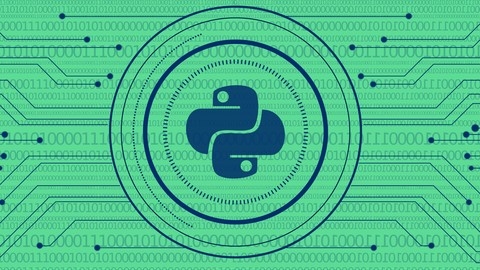Ethical hacking is a crucial skill in today’s digital landscape, empowering individuals to identify vulnerabilities and protect systems from malicious attacks.
By learning ethical hacking, you gain valuable knowledge about security best practices and develop a proactive mindset for safeguarding data and networks.
Finding the right ethical hacking course on Udemy can be challenging, with an abundance of options and varying quality.
You’re seeking a program that’s comprehensive, engaging, and taught by experts, but also caters to your learning style and specific interests.
We’ve carefully reviewed countless Udemy courses and based on our analysis, "Learn Ethical Hacking From Scratch" is the best course overall.
This course stands out for its comprehensive coverage, starting from the fundamentals of hacking and penetration testing and progressing to advanced techniques like network hacking, website hacking, and gaining remote access to systems.
The course features detailed explanations, practical examples, and hands-on exercises, ensuring you develop a deep understanding of ethical hacking principles and gain the skills to implement them effectively.
While this is our top pick, there are other exceptional ethical hacking courses on Udemy tailored to specific interests and skill levels.
Keep reading to discover our curated recommendations, covering a range of topics like website hacking, network hacking, social engineering, and even Python-based ethical hacking tools.
Learn Ethical Hacking From Scratch
This course covers a wide range of topics, from the basics of hacking and penetration testing to advanced techniques like network hacking, website hacking, and gaining remote access to systems.
The course starts with an introduction to ethical hacking, explaining the different types of hackers (white hat, grey hat, and black hat) and the career opportunities in this field.
It then guides you through setting up a hacking lab with multiple operating systems, including Kali Linux, which is the primary hacking platform used throughout the course.
One of the standout sections is network hacking, where you’ll learn how to crack WEP, WPA, and WPA2 wireless encryption, perform packet sniffing, and launch deauthentication attacks to disconnect devices from networks.
The course also covers man-in-the-middle (MITM) attacks, such as ARP poisoning, DNS spoofing, and injecting JavaScript code into target browsers.
Website hacking is another crucial aspect covered in the course.
You’ll learn how to gather information about a target website, discover vulnerabilities like file upload, code execution, SQL injection, and cross-site scripting (XSS), and exploit them to gain access to the website’s server.
The course even teaches you how to use OWASP ZAP to automatically scan websites for vulnerabilities.
Gaining remote access to computers is a significant part of the course, covering both server-side and client-side attacks.
You’ll learn how to use tools like Metasploit and Veil Framework to exploit vulnerabilities and create undetectable backdoors.
Social engineering techniques, such as spoofing emails and creating trojans disguised as innocuous files, are also covered in detail.
It also covers post-exploitation techniques, allowing you to maintain access to compromised systems, capture keystrokes, take screenshots, and even pivot to other systems on the network.
Throughout the course, you’ll learn how to use various tools and frameworks, including Wireshark, Bettercap, BeEF, Maltego, and Nexpose, among others.
The lectures are well-structured, with practical examples and hands-on exercises to reinforce your understanding.
One of the standout features of this course is its emphasis on ethical hacking and responsible disclosure.
It teaches you how to detect and prevent the attacks you’ve learned, ensuring that you use your newfound knowledge responsibly and ethically.
The Complete Ethical Hacking Course: Beginner to Advanced!
The course starts by introducing you to the fundamentals of ethical hacking and the different types of hackers - white hat, grey hat, and black hat.
You’ll learn essential terminology like footprinting, DoS, DDoS, RAT, phishing, and rootkits.
A key part of the course is setting up your own hacking environment using VirtualBox and Kali Linux.
The detailed tutorials walk you through installing and configuring these tools step-by-step, even if you’re using a Windows or Mac system.
This gives you a safe sandbox to practice and experiment with the techniques you’ll be learning.
Once your environment is ready, you dive into the Linux terminal and command line interface.
This foundational skill allows you to harness the full power of Kali Linux for your ethical hacking.
The course then explores important topics like using Tor and VPNs to protect your anonymity online, changing your MAC address, scanning networks with Nmap, and exploiting vulnerabilities.
You’ll learn how to crack WiFi WEP/WPA/WPA2 encryption using tools like aircrack-ng and reaver.
More advanced topics include launching denial of service attacks, using SSL stripping to sniff network traffic, exploiting routers, DNS spoofing, SQL injection attacks on websites, and using tools like Hydra and John the Ripper to brute force passwords.
One of the most interesting techniques covered is the Evil Twin attack, where you clone a WiFi access point to intercept traffic and steal data.
Using a tool like Wireshark, you can analyze the packets to see what websites people are visiting and even sniff login credentials.
In the final part of the course, you’ll code your own keylogger in C++ using Eclipse.
This really reinforces the concepts and puts your skills to practical use.
Throughout the course, you’ll complete hands-on exercises to test your understanding.
You’ll learn how to think like a hacker and approach systems critically to find vulnerabilities.
By the end, you’ll have a solid understanding of the methods and tools used by ethical hackers and penetration testers to secure networks and systems.
Website Hacking / Penetration Testing
The course starts by teaching you how to set up a penetration testing lab using VMware and virtual machines like Kali Linux, giving you a safe environment to practice hacking legally.
You’ll learn Linux basics and how to interact with the terminal, which is essential for any ethical hacker.
Next, you dive into website fundamentals, understanding how they work and the various approaches to hacking them.
The course then takes you through a structured methodology for penetration testing web applications.
You begin with in-depth information gathering using tools like Whois, Netcraft, and Maltego to discover sensitive details about the target such as IP addresses, technologies used, subdomains, and more.
Then you learn how to discover and exploit a wide array of vulnerabilities: file upload flaws to gain server access, code execution bugs to run commands on the server, Local File Inclusion (LFI) and Remote File Inclusion (RFI) to read and write files, and SQL injection to manipulate databases and extract sensitive data like passwords.
The course also covers advanced topics like discovering blind SQL injection, bypassing filters and security controls, gaining shell access, and using tools like SQLmap.
You’ll learn how to find and exploit XSS vulnerabilities to hook targets to the BeEF framework and gain full control over their machine.
Other attacks covered include exploiting insecure session management to login as admin without a password, Cross-Site Request Forgery (CSRF) to secretly change the admin’s password, and using tools like Hydra to crack passwords through dictionary attacks.
In the post-exploitation phase, you’ll learn how to interact with the compromised server to navigate the file system, execute commands, access other websites on the server, download/upload files, get database access and more, using Weevely and reverse shells.
The course also teaches you how to use OWASP ZAP to automatically scan websites for all the vulnerabilities discussed.
You’ll learn how to analyze the results and write a professional penetration testing report detailing your findings.
Importantly, for each vulnerability type, the course explains how to fix them the right way and mitigate the risk.
You’ll understand the root cause of each flaw and the code changes needed to patch them.
By the end, you’ll have a solid understanding of the entire web application penetration testing methodology and how to discover, exploit, and fix vulnerabilities to secure websites.
The course is very hands-on with numerous practical demonstrations and exercises to build your ethical hacking skills.
Learn Python & Ethical Hacking From Scratch
Starting with the fundamentals, you will learn how to set up a virtual lab environment using Kali Linux and VMware Workstation Player.
This isolated environment allows you to safely practice and experiment with various hacking techniques without affecting your main operating system.
You will become familiar with the Linux terminal, running commands, and writing your first Python programs.
As you progress, the course dives into the intricacies of network protocols and packet analysis.
You will learn how to use Scapy, a powerful Python library, to create and manipulate network packets.
This knowledge will be applied to build practical tools such as a network scanner, ARP spoofer, packet sniffer, and DNS spoofer.
These programs will enable you to discover devices on a network, intercept and modify network traffic, and even redirect DNS requests.
The course also covers the fundamentals of web application security.
You will learn how to analyze HTTP requests and responses, exploit vulnerabilities like XSS (Cross-Site Scripting), and inject code into web pages.
Using Python, you will develop a vulnerability scanner to automatically detect weaknesses in websites.
One of the exciting aspects of this course is the exploration of malware development.
You will learn how to create keyloggers, backdoors, and trojans using Python.
The course also teaches you how to package your Python programs into executable files that can run on Windows, macOS, and Linux systems, even without a Python interpreter installed.
Throughout the course, you will encounter various programming concepts and techniques.
Regular expressions (regex) will be used extensively for pattern matching and data extraction.
You will work with data structures like lists and dictionaries to organize and manipulate data efficiently.
Object-oriented programming (OOP) principles will be introduced to create modular and reusable code.
The course also emphasizes the importance of debugging and troubleshooting.
You will learn how to identify and fix common issues, interpret error messages, and resolve conflicts between different Python versions.
This skill is crucial for any aspiring ethical hacker or programmer.
By the end of the course, you will have a solid foundation in Python programming and a deep understanding of ethical hacking techniques.
You will be equipped with a toolkit of powerful programs and the knowledge to analyze network traffic, exploit vulnerabilities, and develop custom security tools.
Complete Ethical Hacking Bootcamp
The course starts by setting up your own hacking lab using Virtual Box and Kali Linux, a powerful Linux distribution designed for penetration testing.
You’ll learn the basics of Linux, including navigating the file system, creating files, and managing directories.
This foundational knowledge will serve you well throughout the course.
Next, you’ll dive into reconnaissance and information gathering techniques using tools like Whois, Whatweb, theHarvester, and Sherlock.
These will help you obtain IP addresses, discover website technologies, gather emails, and find usernames associated with your target.
With your target identified, you’ll move on to scanning, learning about TCP, UDP, and different types of Nmap scans.
You’ll discover how to detect the target’s operating system and service versions, use decoys and packet fragmentation to evade firewalls, and even write your own port scanner in Python.
Vulnerability analysis is up next, where you’ll use Nmap scripts and Nessus to find vulnerabilities in your target systems.
This leads into exploitation, the heart of ethical hacking.
You’ll learn about reverse shells, bind shells, and the powerful Metasploit Framework.
Hands-on exercises will have you exploiting real vulnerabilities like vsftp 2.3.4, Samba, and even the infamous EternalBlue and DoublePulsar exploits used in the WannaCry ransomware attack.
But exploitation is just the beginning.
The course dives deep into post-exploitation techniques like elevating privileges, extracting data, creating persistence, and using post-exploitation modules.
You’ll even build your own Python backdoor to maintain access to your targets.
Web application penetration testing is extensively covered, with modules on SQL injection, XSS, CSRF, command injection, and using tools like Burp Suite and Hydra for finding and exploiting vulnerabilities.
The course doesn’t stop there.
You’ll learn how to perform man-in-the-middle attacks using Bettercap and Ettercap, crack wireless access points with Aircrack and Hashcat, gain access to Android devices using TheFatRat and Ngrok, and even hack Active Directory.
Throughout the course, you’ll work on Python coding projects to develop your own hacking tools, like a port scanner, a login bruteforcer, and a backdoor.
The included Python crash course will get you up to speed if you’re new to programming.
Bonus modules cover anonymity using Tor, VPNs, and proxychains, ensuring that you can perform your tests without being detected.
By the end of this course, you’ll have a deep understanding of the entire penetration testing process and the skills to perform professional-level ethical hacking.
With over 50 hours of content, detailed explanations, and hands-on exercises using industry-standard tools, this course provides unparalleled value for anyone looking to start or advance their career in ethical hacking.
CompTIA Pentest+ (Ethical Hacking) Course & Practice Exam
The course starts with planning and scoping an engagement, where you’ll learn about risk management, penetration testing methodologies, legal concepts, and professionalism.
You’ll then dive into passive and active reconnaissance techniques, using open-source intelligence (OSINT) tools to gather information about your target.
The course covers vulnerability scanning with tools like Nessus and OpenVas, as well as in-depth coverage of Nmap for network discovery and port scanning.
Social engineering and physical attacks are also covered, including pretexting, baiting, and lock picking.
You’ll learn about wireless attacks on technologies like WEP, WPA/WPA2, Bluetooth, RFID, and NFC.
The course also delves into network attacks such as ARP poisoning, DNS cache poisoning, and password attacks, with hands-on experience using tools like Metasploit and Netcat.
Application vulnerabilities and attacks are a significant focus, with topics like buffer overflows, XSS, CSRF, SQL injection, and using tools like Burp Suite, SQLmap, and OWASP ZAP.
The course also covers cloud attacks, attacks on mobile devices and specialized systems like IoT, ICS, and SCADA.
Post-exploitation techniques are explored, including lateral movement, pivoting, privilege escalation, and data exfiltration using covert channels and steganography.
You’ll learn how to cover your tracks and establish persistence.
The course emphasizes the importance of communication and reporting, teaching you how to present findings, write reports, and implement remediation strategies with security controls.
Scripting basics in languages like Bash, PowerShell, Python, Perl, JavaScript, and Ruby are covered to help automate tasks and create exploits.
Throughout the course, you’ll work with a wide array of tools for OSINT, scanning, networking, wireless attacks, social engineering, web application testing, and more.
The course concludes with a full-length practice exam to prepare you for the CompTIA PenTest+ certification.
Wireshark: Packet Analysis and Ethical Hacking: Core Skills
The course starts with the basics, guiding you through installing Wireshark on both Windows and Mac OS.
You’ll learn how to capture packets and frames, and troubleshoot common issues like no packets being captured.
The instructor also covers advanced topics like port mirroring and SPAN to give you a solid foundation.
Next, you’ll dive deep into the OSI model, learning about each layer from the Application Layer down to the Physical Layer.
This knowledge is crucial for understanding how data flows through networks and where vulnerabilities can occur.
The course explains complex concepts like encapsulation and the differences between the TCP/IP and OSI models in an easy-to-grasp manner.
With a solid theoretical foundation, you’ll move on to practical skills like using Wireshark filters to zero in on specific IP addresses or protocols.
This is where the real fun begins, as you learn how to capture and analyze traffic to detect issues and potential security breaches.
One of the most eye-opening sections covers how to use Wireshark for password hacking.
You’ll see how easy it is to capture passwords from common protocols like Telnet, FTP, and HTTP, including from Cisco router web interfaces.
The course even demonstrates capturing and replaying VoIP calls, showcasing how vulnerable unencrypted communication can be.
But this course goes beyond just offense.
You’ll learn how to play the role of a network detective, analyzing packet captures to troubleshoot issues with protocols like OSPF, EIGRP, and BGP.
The instructor presents you with realistic scenarios and challenges you to identify the root cause, then walks through the solution.
The course also covers advanced topics like using Wireshark with the popular Kali Linux penetration testing distribution.
You’ll see live demonstrations of DTP, VTP, and spanning tree attacks, along with how to perform DHCP starvation and man-in-the-middle attacks.
These practical demos are fantastic for understanding real-world attack vectors.
You’ll also learn how to integrate Wireshark with Python for automating tasks and building your own analysis tools.
The instructor demonstrates capturing OSPF and FTP passwords using Python scripts, showcasing the power of combining your packet analysis knowledge with programming.
Throughout the course, you’ll test your skills with quizzes and practice what you’ve learned with guided labs in GNS3 and virtual machines.
This hands-on approach reinforces your knowledge and gives you the confidence to apply these skills in real network environments.
From fundamentals like the OSI model and Wireshark filters to advanced topics like packet decryption and programmatic analysis with Python, you’ll gain a versatile toolkit for analyzing and securing networks.
Learn Network Hacking From Scratch (WiFi & Wired)
The course starts by teaching you how to set up a lab environment using virtual machines like VMware Workstation Player on Windows, VMware Fusion on Mac, and Linux.
You’ll install Kali Linux, a powerful penetration testing operating system, and learn basic Linux terminal commands.
Next, you’ll dive into network basics, understanding how devices interact and communicate.
The course covers essential concepts like MAC addresses, wireless modes (managed and monitor), and WiFi bands (2.4GHz and 5GHz).
You’ll use tools like airodump-ng to capture packets and gather information about access points and connected clients.
One of the most exciting parts of the course is the pre-connection attacks section.
Here, you’ll learn how to launch deauthentication attacks to disconnect devices from networks, even if they use encryption like WEP, WPA, or WPA2.
You’ll then move on to gaining access by cracking WEP and WPA/WPA2 keys using various methods such as fake authentication, packet injection, and wordlist attacks.
The course also covers advanced techniques like using rainbow tables and GPU acceleration to speed up the cracking process.
After gaining access, the course dives into post-connection attacks.
You’ll learn how to discover connected devices, gather detailed information about them using tools like netdiscover and Zenmap, and launch powerful man-in-the-middle (MITM) attacks using ARP poisoning.
These attacks allow you to spy on network devices, capture passwords, and even inject JavaScript code into target browsers.
The course also covers advanced topics like creating fake access points, generating undetectable backdoors using Veil Framework, and gaining full control over devices on the same network by serving fake updates.
You’ll learn how to use Wireshark, a network protocol analyzer, to sniff and analyze captured data, filter traffic, and extract sensitive information like usernames and passwords.
Throughout the course, you’ll gain hands-on experience with a wide range of tools and techniques, including airodump-ng, aircrack-ng, bettercap, hstshijack, and Metasploit’s Meterpreter.
You’ll also learn how to detect and protect against ARP poisoning attacks and other suspicious activities using Wireshark and other methods.
The Complete Social Engineering, Phishing, OSINT & Malware
You’ll start by learning how to set up a virtual lab using popular tools like VirtualBox and VMware, giving you a safe environment to practice your skills.
The course then introduces you to the fundamentals of ethical hacking, including key terminology and concepts.
Next, you’ll explore the art of social engineering, learning how to manipulate human vulnerabilities to gather sensitive information.
The course covers phishing techniques, including creating convincing fake emails and vishing (voice phishing) attacks.
Malware creation is another key focus of this course.
You’ll learn how to use powerful tools like MSFvenom, Veil, and TheFatRat to craft malicious payloads and embed them into seemingly innocent files like PDFs and Word documents.
The course even covers advanced topics like exploiting Java vulnerabilities and using the Empire post-exploitation framework.
Open-source intelligence (OSINT) gathering is also covered in depth.
You’ll learn how to use search engines, web archives, and specialized tools like Shodan, Maltego, and Recon-ng to uncover valuable information about your targets.
Throughout the course, you’ll gain hands-on experience with industry-standard tools like Kali Linux, Metasploit, and the Social Engineering Toolkit.
You’ll also learn about important certifications in the field, such as the Offensive Security Certified Professional (OSCP) and EC-Council’s Certified Ethical Hacker (CEH).
Learn Ethical Hacking: Beginner to Advanced
This course goes from the basics of setting up a secure hacking environment with Kali Linux in a virtual machine, to advanced techniques like system hacking with Metasploit and coding your own backdoors and keyloggers in Python.
It starts by guiding you through the installation of VirtualBox and Kali Linux, ensuring you have a solid foundation.
You’ll learn essential Linux commands and networking terms, as well as how to change your IP address and MAC address for anonymity.
Next, you’ll dive into footprinting techniques, such as Google hacking, using tools like Nikto and Whois, and gathering information from Shodan and email harvesting.
The course then moves on to scanning, teaching you how to use Nmap and Zenmap to discover vulnerabilities in systems.
A significant portion of the course is dedicated to website penetration testing.
You’ll learn about HTTP requests and responses, how to use Burpsuite for packet editing and bruteforcing logins, and how to exploit various vulnerabilities like SQL injection, XSS, and XML injection.
The course also covers how to prevent these attacks using tools like XCAT.
In the wireless cracking section, you’ll learn how to capture handshakes using airodump, crack passwords with Aircrack and Hashcat, and even how to find and crack hidden networks.
You’ll also discover how to create custom password lists using Crunch and Cupp.
The course delves into man-in-the-middle attacks, teaching you about ARP spoofing, DNS spoofing, and sniffing HTTP traffic.
You’ll learn how to use tools like MITMf and Ettercap to execute these attacks and even how to hook browsers with BEEF.
System hacking with Metasploit is another key topic covered.
You’ll learn about the MSFconsole environment, how to use various Metasploit modules for exploits, and how to create Windows payloads with Msfvenom.
The course also teaches you about privilege escalation, persistence, and even how to hack Android devices with Venom.
To equip you with the skills to code your own hacking tools, the course includes a Python crash course.
You’ll learn the basics of Python programming and then apply that knowledge to code an advanced backdoor complete with a keylogger.
You’ll also build a basic authentication bruteforcer in Python.
The course wraps up with a valuable bonus section on building a career in cybersecurity.
You’ll learn why ethical hacking is a valuable skill, what certifications are most beneficial, and get tips on landing your first job in the field.
Also check our posts on:










